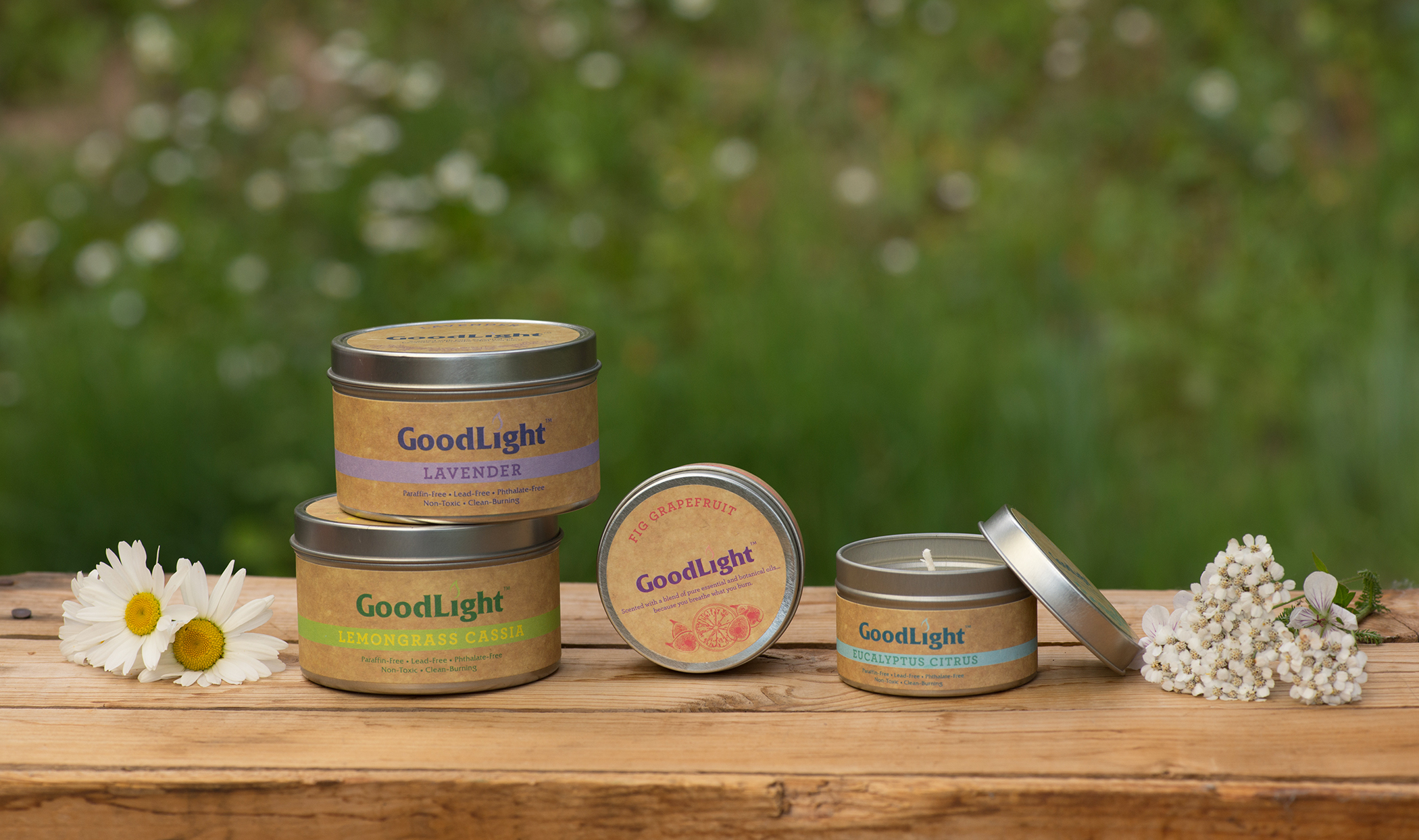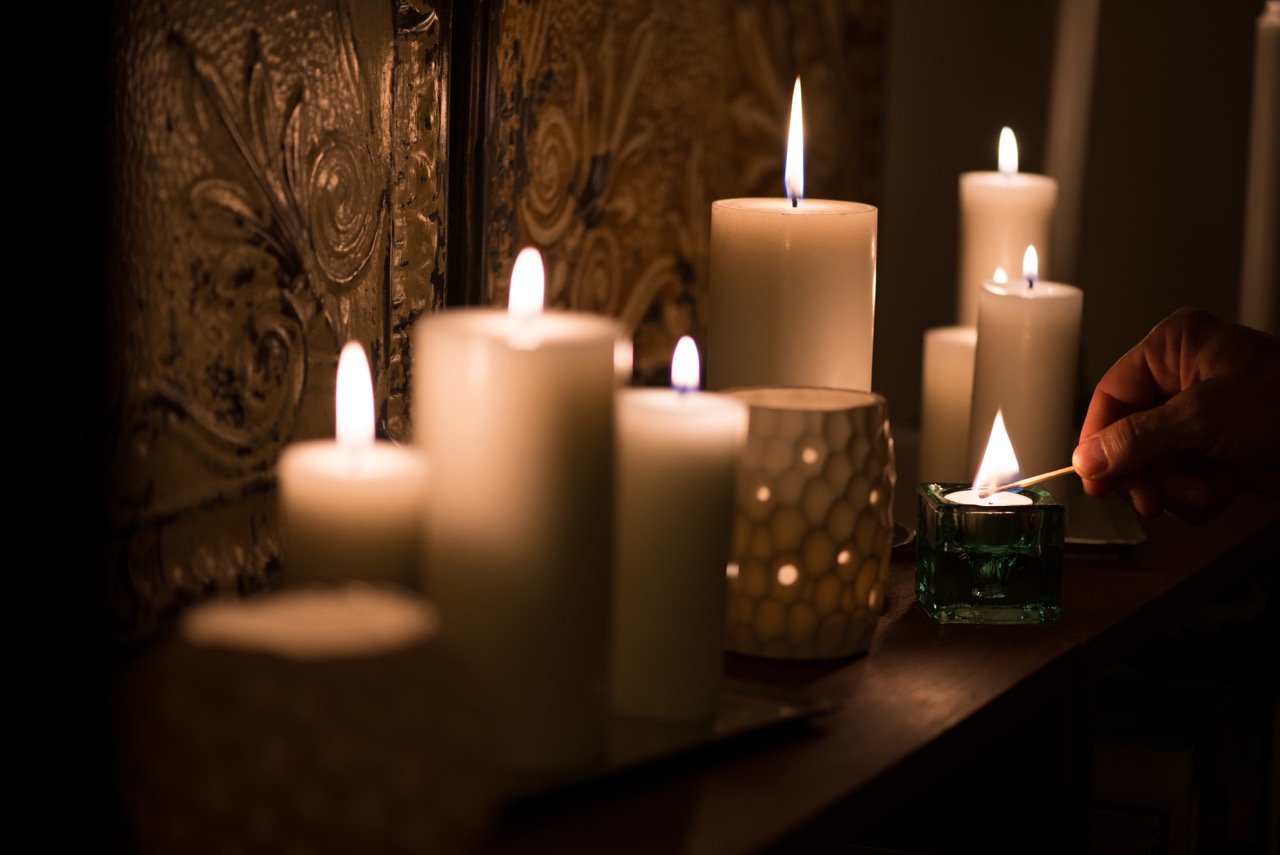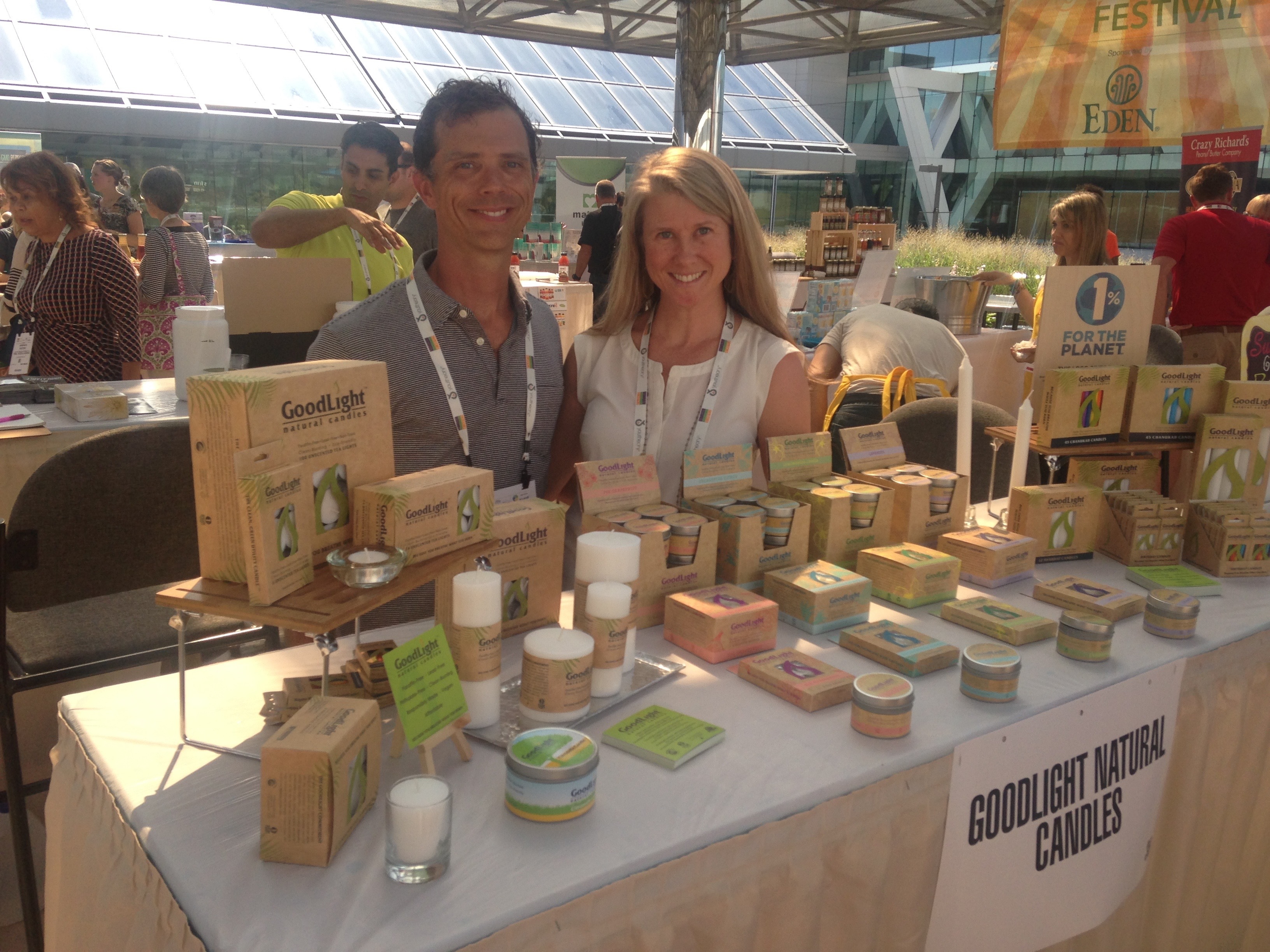For candle aficionados, a good candle can be used for many different things. Elegant lighting for a dinner, a relaxing added touch to a bath, a soothing aromatheraphy tool. So it comes as a bit of a surprise when the byproducts of some common candles are anything but elegant or soothing. That’s because the most common material for candle wax is paraffin, a petroleum-based material that has been shown to emit toxic chemicals like toluene and benezene when burned. If frequently lit in unventilated spaces, they can even cause allergy-like symptoms or respiratory irritation.
Not all candle companies have stuck with paraffin. One of those companies is GoodLight, makers of both scented and unscented candles since 2010. Unlike some of their competitors, GoodLight relies on palm oil to make its candle wax, a more natural material that’s clean-burning and non-toxic. Since its inception, GoodLight has provided candles to customers as varied as restaurants to yoga studios. I reached out to GoodLight co-founder David Callicott to learn more about its environmental vision, its belief in market-driven change, and its involvement with other organizations like 1% for the Planet and Carbonfund.org.
Q: How did GoodLight originally get started?
DC: I started GoodLight with two old friends, Jon and Brian, whom I met in the 1990’s while we were all living in Telluride, Colorado. The idea for the company came from Jon, who had started his own beeswax candle making company in 1991. Jon saw that there were no cost-competitive alternatives to the petroleum-based paraffin candles commonly burned in restaurants (his beeswax candles were too expensive for most restaurants’ candle budgets), but he was too busy running his other company to start a new one by himself. So after years of discussing and researching the idea together, I wrote a business plan, convinced Brian to partner with us, and we launched GoodLight together in April 2010.
We immediately got picked up by Pharmaca, a wonderful Colorado-based chain of holistic drug stores, and we then started selling to Whole Foods Markets shortly thereafter. It turns out that, in addition to restaurants, there was a huge need in the natural retail channel for paraffin-free candles that were actually affordable. Our partnerships with retailers steadily grew from there as we continued on our mission to replace paraffin candles in restaurants (and yoga studios and churches and everywhere else) with clean-burning candle light.

In the photo: Original scented GoodLights Credit: GoodLight
Q: One of GoodLight’s aims is to balance natural materials with affordability, how does the company do that?
DC: One way is to work way too many hours for the first few years without paying yourself much until the company has found some success. Another way is that the material we use to make our candles, palm wax, is much less expensive than beeswax. Which brings up the question of sourcing palm wax, which is a form of palm oil. As many people have come to learn, the palm oil industry is largely responsible for extensive deforestation in Southeast Asia, where about 85% of the world’s palm oil is grown.
When we were researching our options for wax ten years ago, we learned about these issues for the first time, and in the process saw that we had an opportunity to give GoodLight an environmental mission — to educate US consumers about the social and environmental impact of the palm oil industry while promoting the sustainability movement within the industry as well, which at that time had just begun and was almost unheard of here. Most environmental groups had previously advocated boycotting palm oil, but right around the time we started learning about these issues, the consensus was that a palm oil boycott wasn’t going to be effective, and that the best choice we had was to move the industry paradigm to embrace more sustainable farming practices which, among other things, meant growers having zero-deforestation policies. Education, financially incentivising farmers, and market-driven change seemed to offer our best chances at succeeding at these goals, as that approach has helped bring organic agriculture into the mainstream.
The palm industry is still very far from where it needs to be, and enforcing — or even defining — sustainability is an uphill battle, but there has undoubtedly been progress in the past few years as some of the world’s biggest palm oil growers are showing that the transition to sustainability and corporate responsibility can happen without crippling company profits.
Related article: “LITTLE SUN: LIGHTING UP THE DARK WITH SOLAR ENERGY” by Oliver Speakman
Q: What is your customer base like currently, and whom does it consist of?
DC: We have a wide range of customers, and I believe most of our customers share at least a couple of traits: they are health-conscious and want to keep the air in their home/church/restaurant/temple free from pollutants whenever possible, they have an awareness of social and environmental issues, they want to make an impact with the dollars they spend, and they love candles.

In the photo: GoodLights in use Credit: GoodLight
Q: In addition to promoting sustainability with its business practices, GoodLight also supports a number of sustainable organizations and initiatives like 1% for the Planet and Carbonfund. How did those partnerships develop, and what has been their impact?
DC: We joined 1% for the Planet in 2009, six months before we had even sold our first candle, because we knew that we wanted GoodLight to be a company that had the most positive impact possible while having the least negative impact possible. The involvement with 1%FTP led us to both Carbonfund.org (which helps us offset GoodLight’s carbon emissions with reforestation projects) and the Orangutan Land Trust. Since palm oil is directly impacting Southeast Asian rainforests — the habitat for the orangutan and many other endangered species — we wanted the Orangutan Land Trust to be the recipient of our annual 1%FTP contributions — which is 1% of our annual gross sales. Our partnership with the OLT helps finance the rescue, rehabilitation, and release of orangutans whose homes have been destroyed by illegal palm plantation expansion.
Q: What does the future of GoodLight look like in your eyes?
DC: I’m encouraged by the growth of our company over the last few years and hope to see that growth continue as we expand our product assortment, cross over into more conventional retailers, and get more restaurants to replace their current candles with GoodLight so that their staff and guests can breathe cleaner air while at work and while dining out in their establishments. That would satisfy our original mission.
But perhaps more importantly, I’m encouraged by the growing awareness of the necessity to stop deforestation and peatland destruction, and I believe that our growth will give us the opportunity to have a more significant impact in this sphere. Plus, the more candles we sell, the more funds we can contribute to the important work of the Orangutan Land Trust and similar environmental and social non-profits. What better incentive than that could you have to show up for work every day?
Editors note: The opinions expressed here by Impakter.com columnists are their own, not those of Impakter.com










